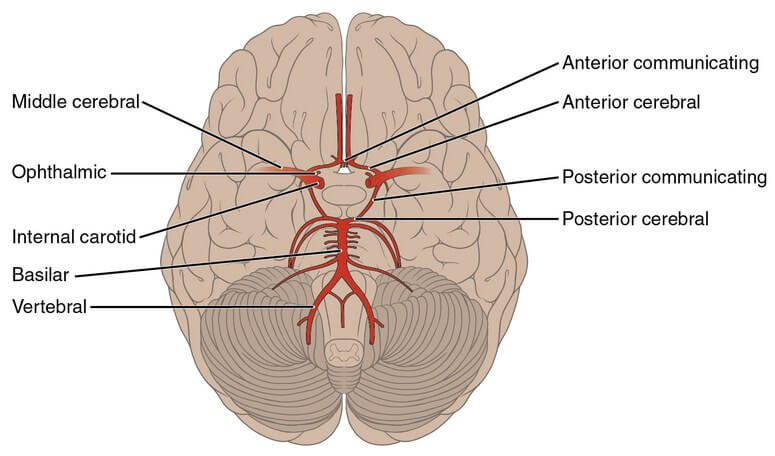
Brain is richly supplied by arteries. Brain is encased inside cranial cavity and covered by meninges. Source of the arteries are from outside the cranium so these arteries will have to enter the cranium. Entering the cranium the arteries and their main branches pierce dura mater and then arachnoid mater and are initially placed in subarachnoid space.
Final sets of branches penetrate brain tissue in
the form of two groups which are:
- Superficial (cortical): Which have two characteristics.
- They supply superficial cortical part of brain.
- They form anastomosis on the surface of the brain which will help in collateral circulation.
- Deep (central, ganglionic or nuclear): Which have two characteristics—
- They supply deeper part of brain, e.g. white matter (fiber bundles) and deep-seated mass
of gray matter like basal nuclei. - These branches are end arteries which do not have any anastomosis before capillary level.
- They supply deeper part of brain, e.g. white matter (fiber bundles) and deep-seated mass
are Vertebrobasilar arterial system and Carotid arterial system.
Vertebrobasilar arterial system
This arterial system is formed by two vertebral arteries. Vertebral artery originates at scelenovertebral triangle of root of neck. But it is the fourth part of vertebral artery which becomes intracranial entering through foramen magnum to supply brain (with spinal cord).
Fourth part of vertebral artery pierces dura mater and then arachnoid mater inside the cranium. Arteries of both sides run upwards, forwards and medially over anterolateral aspect of medulla oblongata and converge towards midline. Uniting with each other in midline at pontomedullary junction both vertebral arteries from basilar artery. Basilar artery runs upwards along basilar sulcus of pons. At the upper end of basilar sulcus basilar artery bifurcates into posterior cerebral arteries.
Carotid arterial system
Carotid arterial system is formed by intracranial portion of internal carotid artery and its branches. Internal carotid artery enters cranial cavity through carotid canal at the base of skull. Entering inside cranium it first lies in middle cranial fossa where it follows the following course The artery runs forwards along carotid sulcus in relation to inferomedial wall of cavernous sinus. Medial to anterior clinoid process it turns upwards. Here it pierces dura mater and then arachnoid mater to reach the plane of subarachnoid space. Internal carotid artery finally turns upwards and backwards lateral to optic chiasma below anterior perforated substance where it divides into its two terminal branches — Anterior and middle cerebral arteries.
Source: Easy and Interesting Approach to Human Neuroanatomy (Clinically Oriented) (2014)